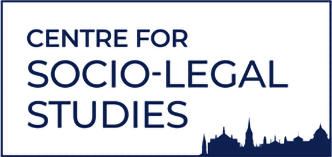
Shifting Dynamics in Medical Law: Invitation to join a network and mailing list

Medical law is a ‘lived’ discipline (p.101). It is entangled in – and its operation is shaped by – the circumstances within which it is experienced. In turn it has a ‘reflexive effect’ on those circumstances (p.3). Understanding medical law, therefore, requires us to be attentive to context. This awareness must be nuanced and multifaceted, drawing attention not only to the places, the actors, and the temporalities with which medical law interacts, but also to the fact that medical law is situated within an assemblage of ‘normative systems, especially those of the health professions and the institutions of the National Health Service’ (p.5). It is striking that medical law’s gaze is extending outwards, to cover an ever-expanding range of topics, spaces, and actors, yet as a discipline we do not always appreciate the reflexive impact that this then has on medical law and the norms underpinning it.
With this in mind, in June 2024 we hosted a workshop (generously funded by the Society for Legal Scholars): Shifting Dynamics in Medical Law: New Spaces, Temporalities and Actors. These sessions began to draw together work engaging with the dynamic relation between space, time, and agents or actors in medical law; and the ways in which these relations underpin and shape the operation and subjective experience of medical law.
We were really struck by the range of spaces, actors, and temporalities that were engaged by the papers discussed on the day. We started by looking at medical law’s operation beyond conventional healthcare institutions, noting the diversity of spaces within which healthcare occurs, including in the (app based) digital realm (Professor Sharifah Sekalala) in the home and in prisons (Professor Laura Abbott and Dr Natalie Avlonitis, and Ruby Reed-Berendt). These papers prompted reflections on the ways in which the space within which healthcare activities occur can shape and disrupt the operation of medico-legal laws and of dominant institutional and colonial logics; and conversely how these laws and their underpinning logics can in turn shape the material and discursive construction of space and medico-legal interactions occurring within them.
As well as showing up in an expanding range of spaces, participant’s research also explored the ways that medical law is interacting with an expanding range of actors; from children with lived experiences of surrogacy (Dr Zaina Mahmoud), to social media influencers, diet coaches and life coaches who offer advice or suggestions which sit outside of traditional biomedical frameworks (Professor Emilie Cloatre), to interpreters who work within healthcare spaces (Rebecca Brione) and migrant healthcare workers (Dr Priyasha Saksena, Dr Amrita Limbu, and Professor Marie-Andrée Jacob). Taken together, the discussions highlighted the importance of understanding how medical law frames such actors, the need to think creatively about research methods to include a multiplicity of voices, and how existing frameworks are operationalised to afford or deny actors legitimacy and expertise.
The final theme was the extent to which medical law is, and / or ought to be, attentive to different understandings and mobilisations of temporality. The papers demonstrated the role of temporality in legal boundary-making and shaping judicial and legislative decision making. Discussion ranged across ‘calendaring’ as a legal technique in the reproduction/abortion context (Dr Ruth Fletcher), the (mis)use of the temporal logic of ‘emergency’ (Dr Nayeli Urquiza), the use of the concept of ‘total pain’ to support patient-centred engagement with the Mental Capacity Act in the hospice context (Dr Caroline Redhead), and the linear temporalities of sex development evident in jurisprudence surrounding access to puberty blockers (Dr Fae Garland and Dr Mitchell Travis).
Acknowledging each of these factors in isolation is insufficient; it is important to consider their nexus. This was clearly demonstrated to us through the presentations in our workshop. While each addressed one primary dynamic (space, or temporality), it was clear that these dynamics were inherently interwoven and that some of the most interesting insights exist at the intersections thereof.
The workshop also reinforced the need to turn the critical gaze inwards – exploring the ways in which these new actors, temporalities, and spaces of medical law can be instructive in exposing, and perhaps disrupting, some of the rigid organising logics which currently underpin (and we argue, at times constrain) the discipline. We ought to be mindful, too, that our current laws and organising medico-legal concepts are built upon a ‘rich history’ (p.104); the ongoing influences and vestiges of which we must seek to understand, even – or especially – where our ultimate goal is to unsettle the status quo.
This is important as medical law’s reach expands; before we export medical law’s concepts and logics into new (inter)disciplinary domains, we should first pause and ask ourselves what purposes these concepts serve (or are thought to serve) – and whose voices and interests they elevate, and whose they obscure.
We believe that to sharpen our analytic toolkit, we must turn our attention to other disciplines which are already doing important work to critique the organising principles of medical law – such as medical humanities and feminist Science and Technology Studies. This interdisciplinary approach will undoubtedly enrich Socio-Legal and medico-legal scholarship, and is one which we seek to encourage by opening up our networks to scholars from all disciplines. It was also acutely apparent at the workshop and the discussions following it that recognising the need to revisit conceptual norms and methods in medical law requires careful reflection on how we teach medical law, the topics that we cover, and the tools and methods that we equip students with and utilise in our own research.
Following on from the generative discussions during this event, we have established a network of the same name – which aims to facilitate ongoing conversation about the dynamic nature of medical law in an interdisciplinary manner. Instructions on how to join the network can be found at the end of this post. The benefits of interdisciplinarity can only be fully realised in tandem with a commitment to methodological curiosity and innovation, and we hope the network will provide peer support to enable this endeavour.


